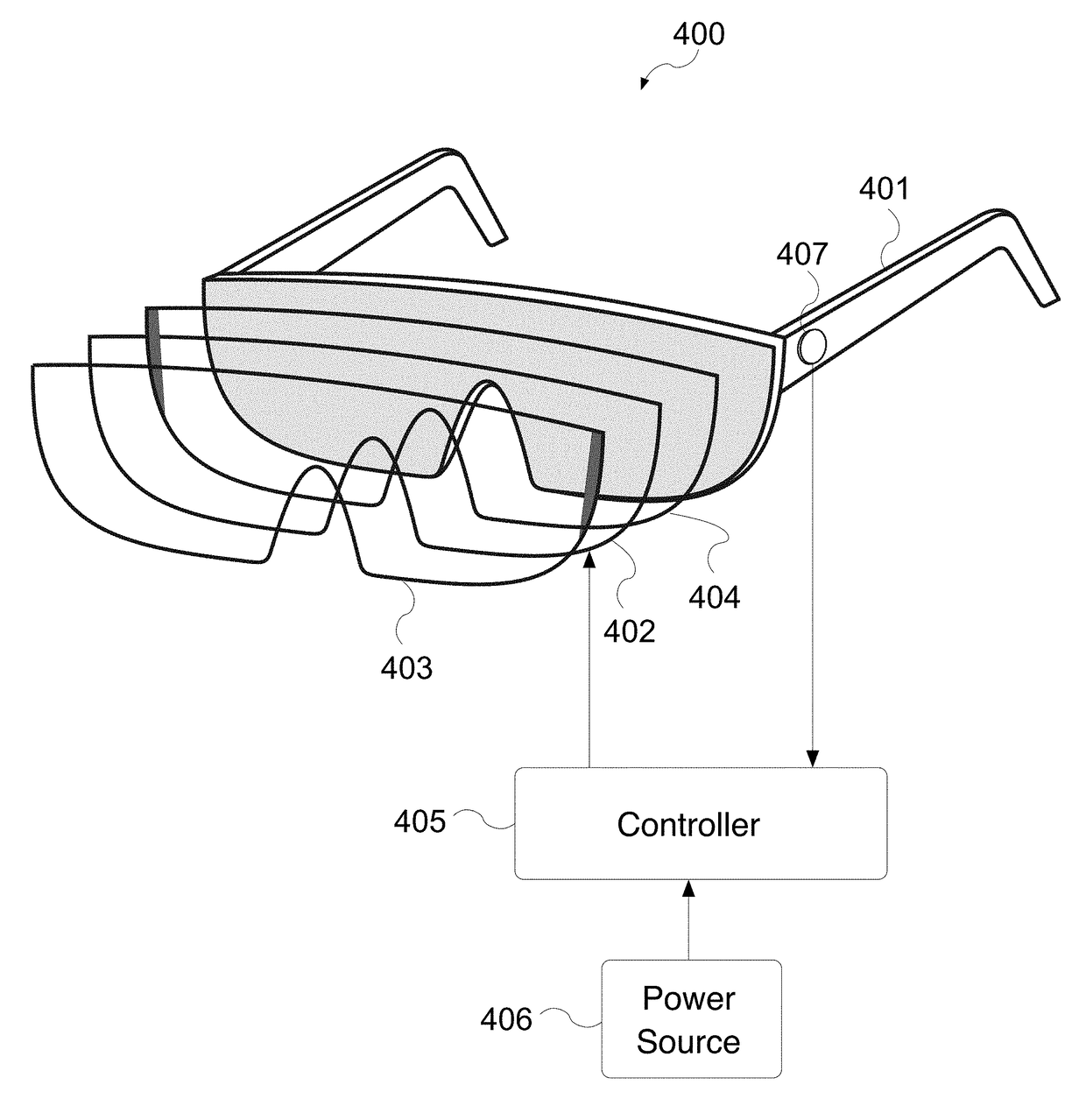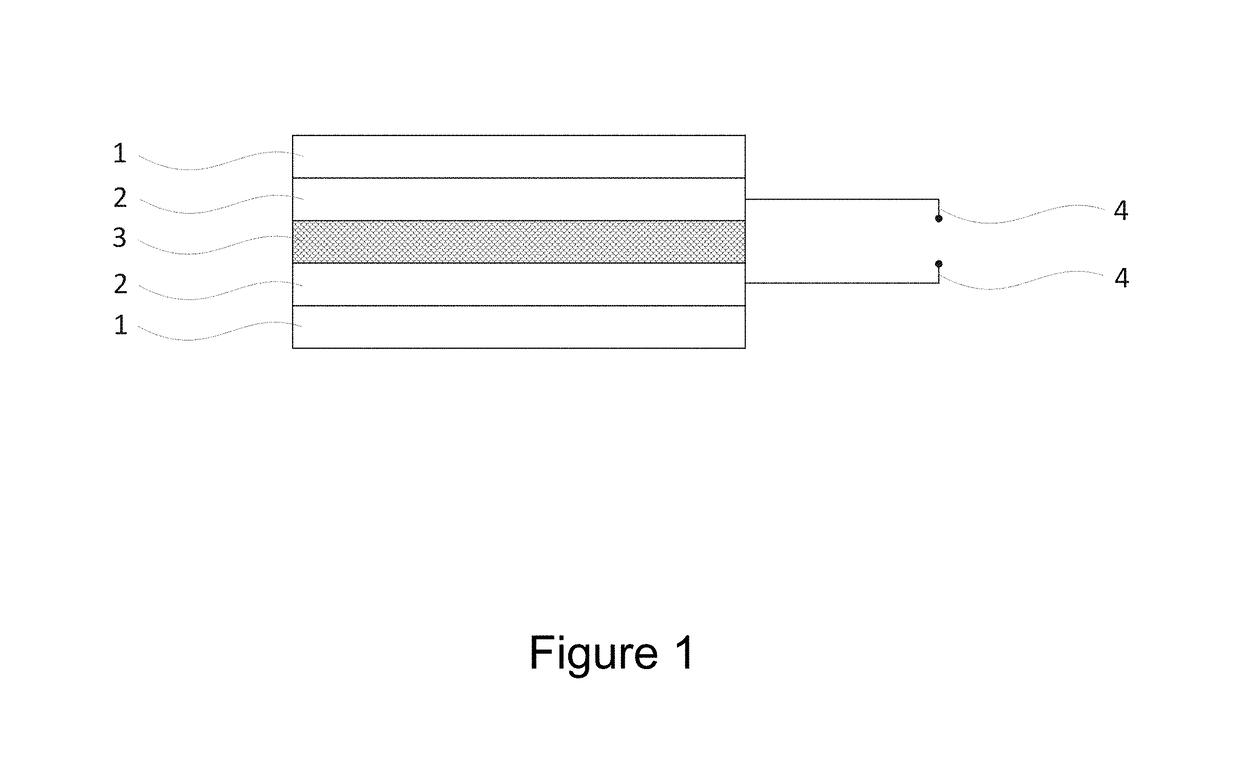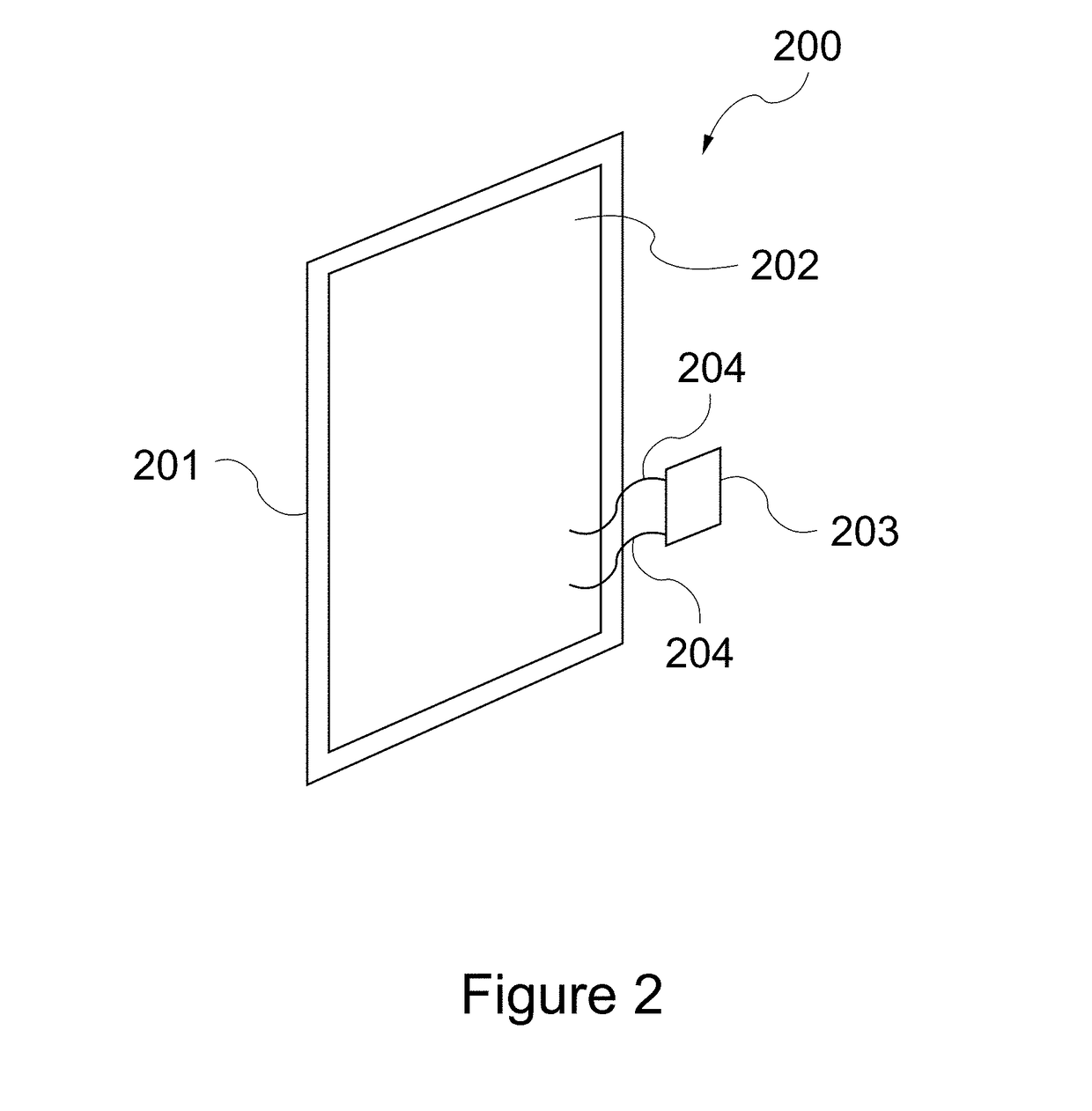Wearable electro-optical device using electrochromic layer
a technology of electrochromic layer and wearable electrodes, applied in the field of electrochromic devices, can solve the problems of lens requiring comparable time to recover light transmission ability, photochromic lenses, and sunglasses or helmet faceshields that are not capable of changing light transmittance, etc., and achieve low light transmittance and high light transmittance
- Summary
- Abstract
- Description
- Claims
- Application Information
AI Technical Summary
Benefits of technology
Problems solved by technology
Method used
Image
Examples
example 1
[0051]A first exemplary composition was prepared by dissolving 1,1′-dibenzyl-4,4′-bipyridinium di(perchlorate) to a concentration of 1.2% and 1,1′-diethylferrocene, as well as a copolymer of methylacrylate and acrylic acid to a concentration of 33.8% in propylene carbonate. The resulting composition was used for constructing an electrochromic device having the thickness of the inter-electrode spacing being 100 μm. In the initial state, the composition had a light yellowish color. When voltage of 1.5 V was applied, the color turned blue. Initial transmittance was 70%. The electrochromic device was tested for 8 hours per day under the following conditions: coloring for 30 seconds at U=1.5 V and discoloration for 30 seconds by circuiting the electrodes. After 3 and 6 months of work in a non-colored state, the light transmittance was 65% and 61%, respectively.
example 2
[0052]A second exemplary composition was prepared by dissolving 1,1′-dibenzyl-4,4′-bipyridinium di(perchlorate) to concentration of 1,2%, 1,1′-diethylferrocene to a concentration of 0,5%, and a copolymer of methylacrylate and acrylic acid to a concentration of 33.8% in propylene carbonate. The resulting composition was used for filling a 50-μm interelectrode space of the electrochromic device. In the initial state, the composition was practically colorless. When voltage of 1.5 V was applied, the color turned blue. Initial transmittance was 78%. The electrochromic device was tested for 8 hours per day under the following conditions: coloring for 30 seconds at U=1.5 V and discoloration for 30 seconds by circuiting the electrodes. After 3 and 6 months of work in a noncolored state, transmittance was 75% and 69%, respectively.
example 3
[0053]A third exemplary composition was prepared by dissolving 1,1′-dibenzyl-4,4′-bipyridinium di(perchlorate) to a concentration of 1.2%, 1,1′-diethylferrocene to a concentration of 0.5%, and polyvinyl acetate to a concentration of 34% in propylene carbonate. The resulting composition was used for filling a 50-μm interelectrode space of an electrochromic device. In the initial state, the composition was practically colorless. When voltage of 1.5 V was applied, the color turned blue. Initial transmittance was 77%. The electrochromic device was tested for 8 hours per day under the following conditions: coloring for 30 seconds at U=1.5 V and discoloration for 30 seconds by circuiting the electrodes. After 3 and 6 months of work in a noncolored state, transmittance was 73% and 65%, respectively.
[0054]In one or more embodiments, the upper limit of concentrations was determined by solubility of quaternary salts of bipyridine in the solvent used, and the lower limit was defined by the min...
PUM
 Login to View More
Login to View More Abstract
Description
Claims
Application Information
 Login to View More
Login to View More - R&D
- Intellectual Property
- Life Sciences
- Materials
- Tech Scout
- Unparalleled Data Quality
- Higher Quality Content
- 60% Fewer Hallucinations
Browse by: Latest US Patents, China's latest patents, Technical Efficacy Thesaurus, Application Domain, Technology Topic, Popular Technical Reports.
© 2025 PatSnap. All rights reserved.Legal|Privacy policy|Modern Slavery Act Transparency Statement|Sitemap|About US| Contact US: help@patsnap.com



